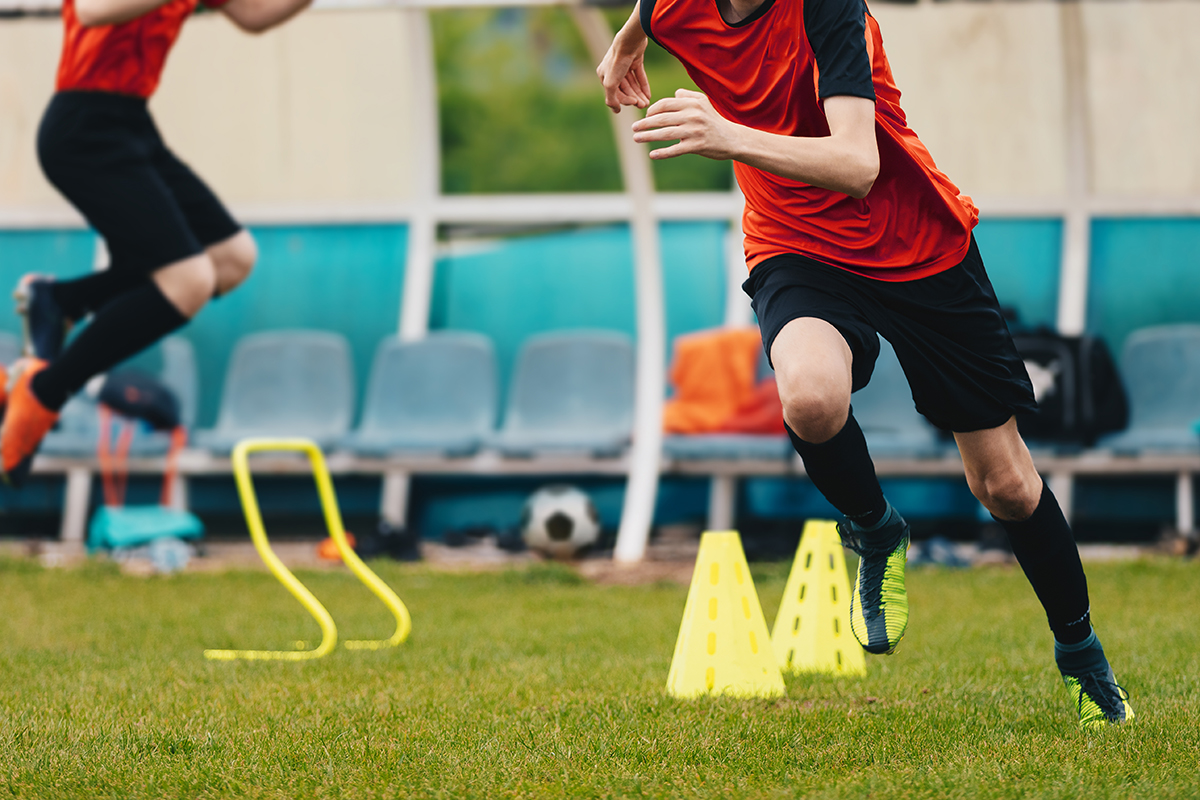Have you ever wondered how elite soccer players maintain their exceptional performance on the field? In a sport as dynamic and demanding as soccer, the key to excelling lies not only in technical or tactical skills, but in a precise combination of strength, speed and power. This article explores how the physical performance of professional footballers is measured and optimized, revealing the secrets behind their success on the pitch.
Evolution and demands of modern soccer
Soccer has changed dramatically in recent years, with an evolution in playing tactics and physical preparation. The sport demands a constant alternation between high and low intensity activities such as jumping, passing, shooting and sprinting. Although these explosive actions represent only a small fraction of the total distance covered, they are crucial to success on the field.
How distances and intensity define on-field performance.
Elite soccer players typically cover between 9 and 14 kilometers in each match, including approximately 900 meters at high speed and 300 meters in sprints. In addition, they make more than 700 changes of direction during a single match. This high physical demand requires exceptional strength and power attributes for optimal performance.
Key assessments for measuring power and speed in soccer
To measure strength and power, coaches rely on a number of specific tests. Among the most common are the vertical jump, which assesses lower limb explosive power; the sprint test, which measures top speed; and the lower body maximal strength test, such as the squat. These assessments not only identify players’ strengths and areas for improvement, but also help reduce the risk of injury and improve overall performance.

The relevance of strength and power in player success.
A study published in Sports Medicine highlights the significant correlation between maximal squat strength and performance in short sprints and vertical jumps in elite soccer players. Straight-line speed is especially crucial in goal-scoring situations, underscoring the importance of strength and power in individual performance.
Training strategies to optimize physical performance
In summary, strength and power are essential components of performance in professional soccer. Through specific testing and targeted training programs, teams can maximize these physical capabilities, thereby ensuring not only better performance on the field, but also a reduced likelihood of injury. By understanding and applying these principles, elite soccer players can stay at the top of their game, successfully meeting the challenges presented by this exciting sport.
Boost your career
If you are passionate about sport and want an in-depth understanding of how to optimize the physical performance of athletes, we invite you to explore our Master in Physical Activity: Sports Training and Management. This graduate program is designed to provide you with advanced knowledge on the assessment and improvement of strength, speed and power in athletes, aligning with the demands of professional soccer and other high-performance sports. With comprehensive training in coaching techniques, physical testing and sport management, our master’s degree will prepare you to address the challenges of the professional field with an evidence-based approach and the latest trends in sport science. Discover how this program can transform your career and open up new opportunities in the sporting arena. For more information, visit our website and take the next step towards your professional future.
Link: Master in Physical Activity: Sports Training and Management

